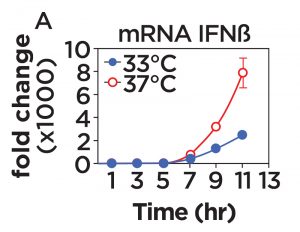
Cozy Therapy – Extreme Times Require Extreme Comfort!
People choose cool for reasons such as avoiding perspiration, feeling unrestricted, or looking slim. Cozy clothing makes people look heavier. Sometimes they want to avoid having body odor or they don’t feel so restricted. If you were brought up with an “Energy Shortage” or expensive heating bills, possibly feeling cold might be associated with “doing the right thing”? On the other hand, people often dress cozy, wearing extra layers, because they want to feel cozy and don’t care about all this other complexity.
I recently researched the effect of keeping the sinuses and lungs warm as it relates to the common cold based on research by Dr. Chan in Hong Kong.1 I was surprised to discover that simply keeping the arms and legs closer to the core body temperature of 97-98F has a dramatic effect of enhancing immune response in lungs and sinuses.
The principal conclusion is that, while our grandmothers understood the importance of keeping the body cozy, modern medicine often separates the role of pharmaceuticals to fix the body from the effect of the body’s ability to heal itself. Thus, the system has largely ignored the role of peripheral body temperature in health and well-being. Also, the news we read and the advertising we are exposed to is often driven by selling something. This means there is not financial benefit to providing grandmotherly advice like “if your legs or feet are cold, put on some more clothes or a blanket.” The fact is that corporations make more money if you don’t pursue optimal health on your own because then you are more likely to need what they sell.
As the person falls to sleep the heat production and body temperature decrease. While core metabolic temperature may stay within or close to the “normal” range, the arms, legs, and surface fascia can get cold along with the sinuses and lungs. This allows a variety of opportunistic infections like the flu to multiply more rapidly all night long. This can prolong illness and cause pneumonia and other infections to get worse and worse. This is particularly troublesome for the elderly who already have a very low metabolism and get cold very easily. Could it be that a lack of blankets is a major cause of mortality in hospitals?

Sources :
1 https://doi.org/10.1073/pnas.1411030112
2 https://www.bmj.com/rapid-response/2011/10/29/coronavirus-may-be-killed-higher-body-temperature
3 https://ccforum.biomedcentral.com/articles/10.1186/cc13106
4 https://www.medicalnewstoday.com/articles/269266
5 https://www.ncbi.nlm.nih.gov/pmc/articles/PMC3864348/
6 https://www.medicalnewstoday.com/articles/269266
7 https://www.sciencedaily.com/releases/2016/03/160302204512.htm
8 https://www.verywellhealth.com/are-operating-rooms-cold-to-prevent-infection-2549274

 Summary: Most human rhinovirus, the common cold virus, replicate more robustly at the cool temperatures found in the nasal cavity (33–35 °C) (91–95 °F) than at core body temperature (37 °C). Mouse airway cells infected with mouse-adapted rhinovirus 1B showed a much stronger antiviral defense response at 37 °C relative to 33 °C.” 1 2
Summary: Most human rhinovirus, the common cold virus, replicate more robustly at the cool temperatures found in the nasal cavity (33–35 °C) (91–95 °F) than at core body temperature (37 °C). Mouse airway cells infected with mouse-adapted rhinovirus 1B showed a much stronger antiviral defense response at 37 °C relative to 33 °C.” 1 2 “To address the basic question of whether tumor growth is influenced by ambient temperature, we compared tumor formation and growth rate in several widely used research mice housed at either standard temperature (ST; ∼22–23 °C) (72-73 °F) shown as the blue (cold) line in the graphs below or at thermoneutral temperature (TT; 30– 31°C) ) (86-88 °F) (.shown as the red (warm) line (as shown in the graph). 5
“To address the basic question of whether tumor growth is influenced by ambient temperature, we compared tumor formation and growth rate in several widely used research mice housed at either standard temperature (ST; ∼22–23 °C) (72-73 °F) shown as the blue (cold) line in the graphs below or at thermoneutral temperature (TT; 30– 31°C) ) (86-88 °F) (.shown as the red (warm) line (as shown in the graph). 5 
Thank you so much for this and previous articles!! Always very informative!
Thank you Lisa! We strive to provide the Tribe with good and helpful information! Thank you for reading!
Made sense to me. I like warm and cozy in winter. Always dress in layers easier than getting sick. Coach always taught to keep body warm as it keeps the muscles working better and stays off illnesses he was right.
I keek my hands warm after being in the refrig in the morning by wearing mittens with the fingers out. At night I made a mask ,A big square with a hole for the nose to breath. I don’t move at night so it works, Others might try making a around the head one with the nose hole out of an old t-shirt.
There is a flow of air in every home especially when the heaer goes on. The breeze is cooling.
Thanks for confirming this is good health.
Lorraine VanDenburgh
Lorraine,
That is amazing to hear! I loved speaking with you about some other tips and tricks to help with sinuses! I love the T-shirt idea, it is convenient and simple in ways to keep warm!
Best wishes,
Madisyn at CHI
Regarding cold operating rooms, more than the pace of the surgical suites is how much protective gear is required for the staff. Just a mask & eye protection can get uncomfortably warm. Add plastic/paper gowns & hair covers. And it’s pretty much impossible to put on the gloves if your hands are the least bit damp from perspiration. Not to mention I can’t see when my glasses get fogged or have sweat dripping onto the lenses. I fantasize about those air conditioned suits for characters at Disneyland.
HI Kathryn, Thank you for a big dose of reality from the perspective of the surgical staff. I certainly agree with what you are saying. It seems that a method might be devised to heat the patient’s extremities based on temperature of the extremities. The factors you bring up are certainly important to achieving a positive outcome from surgery. Similarly, maintaining patient body temperature may prove to be just as important to a successful surgery. Maybe we can find a way in which both can be achieved. Great comment!!!